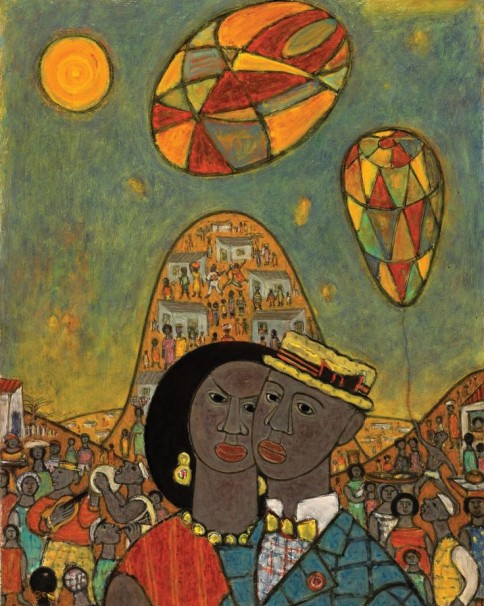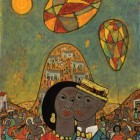1900 – 1954 : Kirszenbaum represents a generation of artists who, faced with an increasingly hostile and repressive political environment and a dearth of institutions capable of stimulating their artistic development, were compelled to leave their native Eastern Europe. His peregrinations led him from his native Staszow to the Weimar, Berlin and Paris; each station providing an opportunity to gain from avant-garde artistic environments such as the Bauhaus and the School of Paris. At the same time, the artist’s journey was marked by the continually growing threat of the Nazi Regime. Although he survived the war, spending most of it in various work camps in Southern France, he returned to Paris to discover the destruction of his studio and life’s work at the hands of looters and the loss of his wife Helma, who had been deported and eventually perished in Auschwitz. Kirszenbaum’s story is one shared by many, but his art offers a unique picture of a generation lost.Kirszenbaum represents a generation of artists who, faced with an increasingly hostile and repressive political environment and a dearth of institutions capable of stimulating their artistic development, were compelled to leave their native Eastern Europe. His peregrinations led him from his native Staszow to the Weimar, Berlin and Paris; each station providing an opportunity to gain from avant-garde artistic environments such as the Bauhaus and the School of Paris. At the same time, the artist’s journey was marked by the continually growing threat of the Nazi Regime. Although he survived the war, spending most of it in various work camps in Southern France, he returned to Paris to discover the destruction of his studio and life’s work at the hands of looters and the loss of his wife Helma, who had been deported and eventually perished in Auschwitz. Kirszenbaum’s story is one shared by many, but his art offers a unique picture of a generation lost.
After a traditional childhood in a shtetl in Staszow, Poland, Jechezkiel David Kirszenbaum began official artistic study at the Bauhaus in Weimar, in the mid 1920s, under Paul Klee, Wassily Kandinsky and Lyonel Feininger.
In the early 1930s he moved to Berlin where he worked as a caricaturist for the local press and became part of the local artistic avant-garde, exhibiting at local galleries including Der Sturm. In 1933, fleeing growing Nazi oppression, he relocated to Paris with his wife Helma. There, inspired by the School of Paris, he further developed his Expressionistic style and began to exhibit works in various Parisian locales. In 1940 he was relocated to Southern France where he was imprisoned in various work camps for the duration of the war. Following the war Kirszenbaum returned to Paris where he discovered that his wife, who had been deported to Auschwitz, had perished and that his studio, and its contents, had been pillaged and destroyed. The years immediately following the war were a period of recovery and healing for Kirszenbaum. He resumed painting and traveled to far-off countries, including Brazil and Morocco, where he exhibited locally. In the early 1950s he returned to Paris, where his work was featured in his first major solo exhibition as well as at several other significant venues, before succumbing to cancer in 1954.

